Changes on the horizon
Let’s skip forward, more than a decade after the opening of Journey into Imagination.
By the early-90s, EPCOT Center’s future (and Future World) was already in flux. As sponsorship contracts came up for renewal, Disney faced a situation it hadn’t imagined: rather than renewing contracts and reinvesting in keeping their pavilions up to date, corporations began to waver… Why?
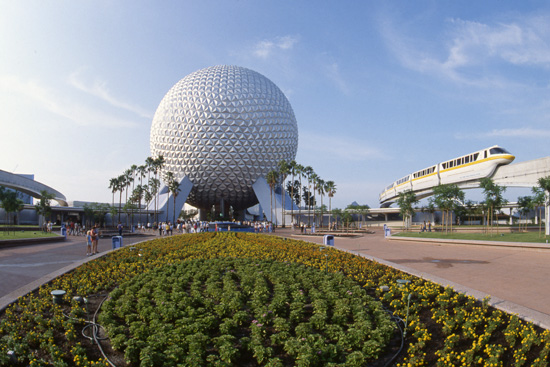
For one thing, attendance at EPCOT had fallen with the opening of the Disney-MGM Studios in 1989. The park might not have had the majesty of Magic Kingdom or the scope of Epcot, but its “Ride the Movies” mantra had given rise to the resort’s defining cinematic thrill rides: the Lost Legend: Star Tours and the Modern Marvel: The Twilight Zone Tower of Terror.
Perhaps as a result, Epcot had developed into a bit of a pop culture punchline. Disney World’s “educational” theme park – with its lengthy, informative dark rides and its cultural, culinary pavilions – had suceeded in diverging from what people expected of Disney… but it also made Epcot the park kids dreaded “wasting” a day at.

But one of Epcot’s most obvious flaws was its DNA. Consider that EPCOT Center’s opening in 1982 was heralded in the press as the “arrival of the 21st century.” The problem is, we’re now talking about the mid-1990s. The actual 21st century was looming on the horizon, and Epcot didn’t look anything like what lay ahead. In fact, Epcot looked very much like the future as envisioned from the 1970s and ’80s – monumental architecture, pastel accents, wide concrete expanses, geometric flower beds, and cool grays.
This much was clear: EPCOT Center needed a revitalization to just not recoup attendance and salvage sponsors, but to refresh the park’s lineup with more thrills and more character. So even if – in retrospect – fans decry the inevitable changes at Epcot that divided the park’s once-connected pavilions, Epcot did need to change.
Experimental Pop Culture of Tomorrow
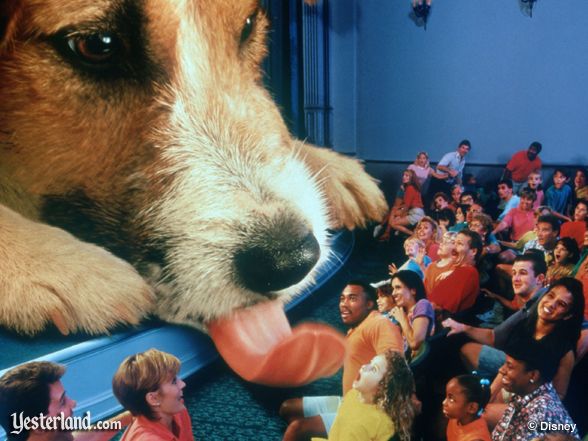
In 1994, EPCOT Center was renamed Epcot ’94. To celebrate, the Lost Legend: Captain EO vacated the Imagination pavilion’s 3D theater in favor of “Honey, I Shrunk the Audience” (based on the Honey, I Shrunk the Kids film series that had kicked off in 1989). One of the earliest explicit IP entries once forbidden in Epcot, the film invited guests into the Imagination Institute where Wayne Szalinski (played by Rick Moranis) was receiving an award for his shrink ray. Of course, something goes horribly wrong, shrinking guests to be attacked by rats, snakes, dogs, and more.
It was just the start. In 1994, Communicore was replaced with the more playful Innoventions. The Lost Legend: Horizons closed in 1995 (to become the thrilling next-gen simulator, Mission: SPACE). In 1996, the Lost Legend: Universe of Energy was redesigned to incorporate stars from newly-acquired ABC, becoming Ellen’s Energy Adventure; that winter, World of Motion was shuttered to become the high-energy TEST TRACK.

By the late ’90s, Epcot was a park in upheavel. But all would be ready in time for the park’s starring role in Disney’s Millennium Celebration – the perfect time to reintroduce Epcot as an authentic glimpse into a 21st century defined by technological showcases and semi-scientific, discovery-centered thrill rides.
Seemingly every corner of Future World was in the midst of refreshing ahead of the Millennium Celebration… And that’s when it happened…
Reimaginings
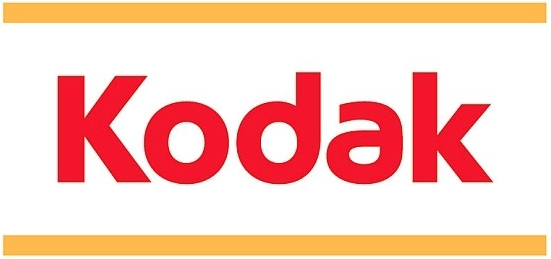
Sometime in the late 1990s, Disney invoked the contract that Kodak had signed and made it clear that if Kodak wanted to keep their sponsorship of the Imagination pavilion and its brand ambassador messaging throughout the ride and its post-show, it would need to invest in refreshing the ride in time for Epcot’s Millennium Celebration.
Kodak, for its part, was in no place to invest in a Disney dark ride. The photography giant had been in a financial tumble for years, reeling from their shortsighted response to the arrival of digital photography.
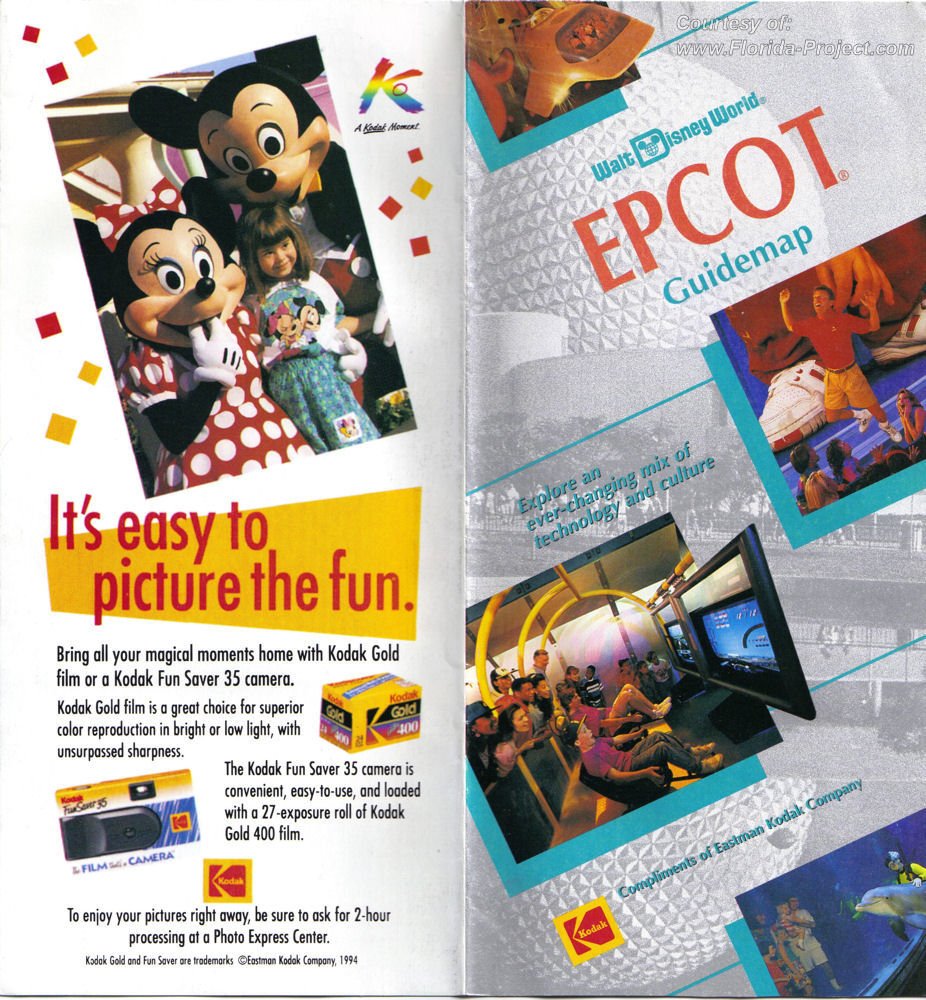
After decades of being on top, Kodak was in such bad shape that in 1999 the company cut its employment by 20%, eliminating tens of thousands of positions. One out of every five employees was let go. Imagine if you were one of those let go, then watched as the company spent millions redesigning a ride at Disney World. Yikes.
Put simply: Kodak probably should’ve let the Disney sponsorship go to focus on its core assets. (And in 2012, they did. Coinciding with the company’s bankruptcy filing, Kodak dropped its sponsorship from Kodak Photo Spots and the complimentary park guide maps across which their logo was displayed.) But back in the ’90s, a circling shark in the water made that hard to do.

For years, Kodak’s biggest competitor – Fujifilm – had been trying to get into Disney Parks.
So poisonous was the rivalry that Kodak allegedly blocked plans for a Mount Fuji roller coaster in Epcot’s Japan pavilion simply due to the perceived connection. According to insiders, Fujifilm wanted into Disney World badly, and was more than happy to take over the Imagination pavilion from its flailing adversary.
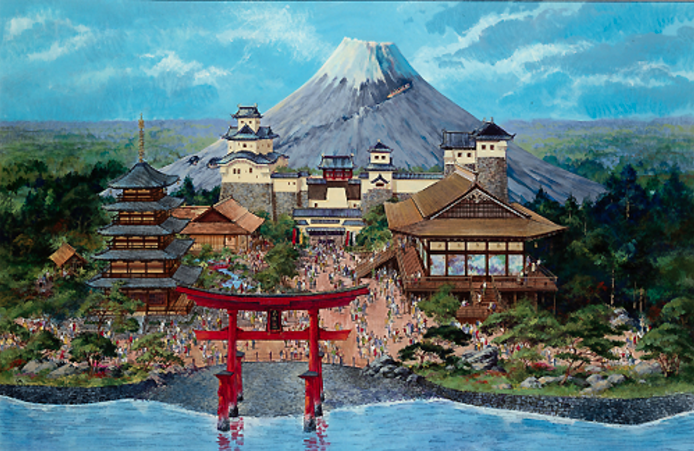
Kodak couldn’t allow its competitor to weasel into its territory, so they agreed to Disney’s demands to freshen up the Imagination ride. But they would only offer Disney a small fraction of the money they’d requested.
Working on a slashed budget and with precious little time until the Millennium Celebration debuted, Disney’s Imagineers got to work designing something new on the shoestring budget they’d been provided.
A new journey
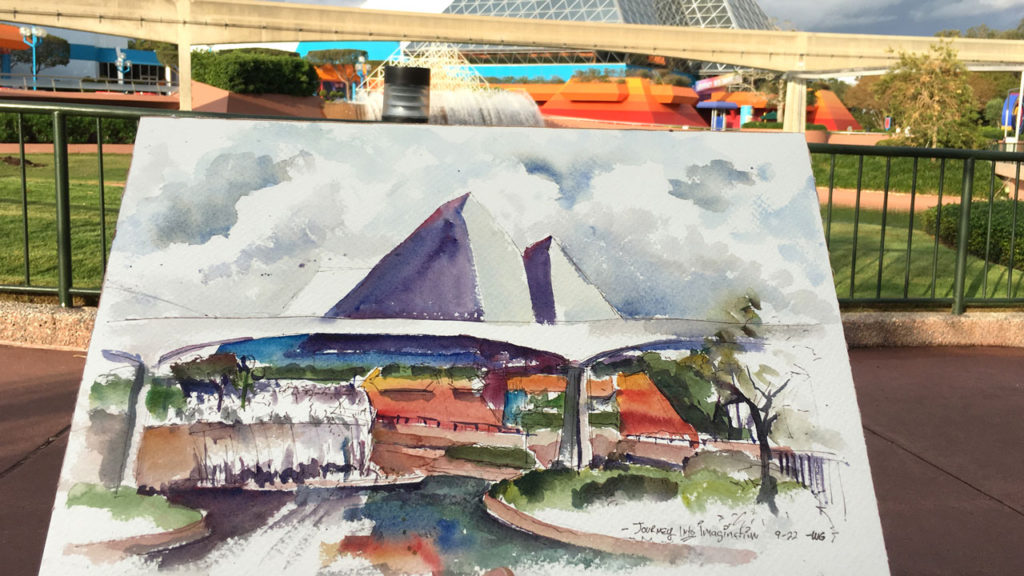
By 1998, concepting was well underway on a substantial update for Journey into Imagination. As the story goes, Kodak executives had a few requests.
- First, they wanted to improve the ride’s reliability and expense by eliminating its troublesome turntable scene;
- Second, they wanted to shorten the 12-minute ride, making it much more palatable for modern audiences used to the Disney-MGM Studios’ 4-minute E-Tickets;
- Third, they wanted Imagineers to consider moving on from that pastel purple dragon…
Thankfully, that aligned with Disney’s quest in the late-’90s to add complementary intellectual properties into Future World to boost the park’s character count. According to entertainment writer Jim Hill (and the fantastic “Disney Dish with Jim Hill” podcast), Imagineers got to work experimenting with new hosts for an imaginative, 21st century dark ride. Among the top contenders? Aardman Animation’s “Wallace and Gromit” and even a trip through the imagination of Michael Jordan.
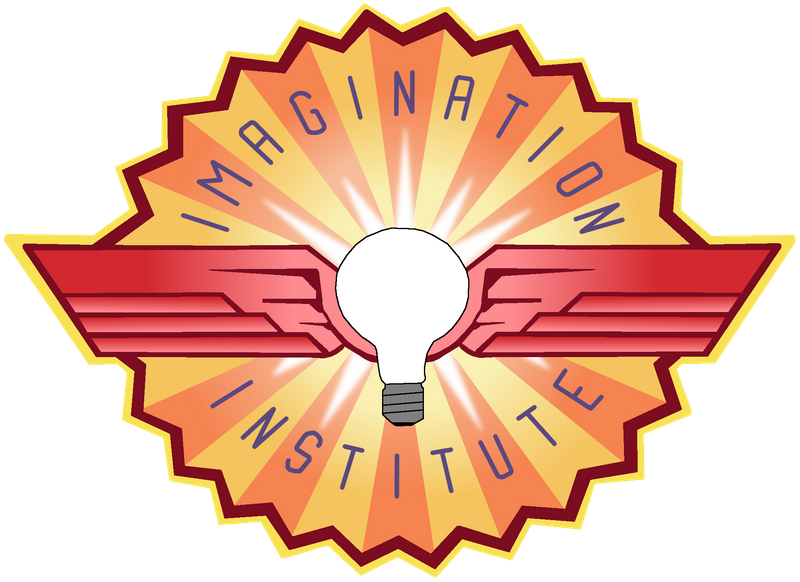
Eventually, they’d centered in on creating a mini-continuity within the Imagination pavilion, connecting the “Honey, I Shrunk the Audience” film and the reimagined ride in an Imagination Institute storyline. Reportedly, Imagineers even drafted plans for a dark ride based on 1997’s Flubber starring Robin Williams. (Williams’ Professor Brainard was referenced in the Imagination Institute queue of “Honey I Shrunk the Audience” as an institute awardee, making a Flubber dark ride a natural fit…) However, Flubber was critically panned and wasn’t the box office blockbuster Disney hoped.
So plans for an Imagination Institute dark ride were redesigned. A Disney executive reportedly recalled later:
“If you were in that room hearing the pitch you would have been blown away. You’ll be in this dark room and not be able to tell up from down. You will be surrounded by sound and not know the direction. It was all amazing, sounded state of the art and more importantly guaranteed to give the guests a terrific experience.”
Journey into Imagination closed forever on October 10, 1998. Less than a year later, Epcot’s glass pyramids re-opened with something very, very different inside…


